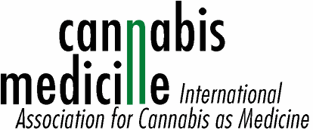30 August 2009
Participation in the survey on modes of delivery of cannabis and single cannabinoids
is possible until 30 November 2009. In the first ten days there were already 312
participants, of whom 230 completely filled out the questionnaire and 82 not
completely. The questionnaire is available at:
http://www.cannabis-med.org or directly at:
English
German
Spanish
French
Dutch
1. Science: Cannabis use has other effects on lung function than tobacco use
According to a long-term epidemiological study conducted in New Zealand smoking
of cannabis has other effects on the lungs than tobacco smoking. Researchers
compared the associations between use of these substances and lung function in a
group of 1037 adults at the age of 32. Their cannabis and tobacco use were
requested at ages 18, 21, 26, and 32 years. The scientists summarized that “cannabis
use was associated with higher lung volumes suggesting … increased large-airways
resistance, but there was little evidence for airflow obstruction or impairment of gas
transfer.”
In detail, cannabis use was “associated with higher forced vital capacity [maximum
volume of air that a person can exhale after maximum inhalation], total lung capacity
[volume of air contained in the lung at the end of maximal inspiration], functional
residual capacity [volume of air present in the lungs at the end of passive expiration],
and residual volume [amount of air left in the lungs after a maximal exhalation].”
Cannabis was also associated with higher airways resistance but not with forced
expiratory volume in 1 second [volume that can be exhaled within one second after
maximum inhalation]. Authors noted that “these findings were similar amongst those
who did not smoke tobacco.” By contrast, tobacco use was associated with lower
forced expiratory volume in 1 second.
(Source: Hancox RJ, Poulton R, Ely M, Welch D, Taylor DR, McLachlan CR,
Greene JM, Moffitt TE, Caspi A, Sears MR. Effects of cannabis on lung function: a
population-based cohort study. Eur Respir J. 2009 Aug 13. [Electronic publication
ahead of print])
2. Science: Cannabis use may protect the brain from some consequences of alcohol use
Californian researchers investigated the effects of alcohol and cannabis use on the
integrity of the white matter of the brain. They compared 42 adolescents aged 16 to
19 years who belonged to one of three groups: heavy alcohol drinkers, heavy alcohol
drinkers who also were heavy cannabis users, and adolescents who did not use drugs
(controls).
There were differences in eight white matter regions between alcohol drinkers and
controls. However, in four of these regions, alcohol drinkers who also used cannabis
presented with better results than alcohol drinkers. Authors noted that “binge drinkers
who also use marijuana did not show as consistent a divergence from non-users as
did the binge drink-only group.” They said that it is “possible that marijuana may have
some neuroprotective properties in mitigating alcohol-related oxidative stress” or
induction of toxic cell death.
(Source: Jacobus J, McQueeny T, Bava S, Schweinsburg BC, Frank LR, Yang TT,
Tapert SF. White matter integrity in adolescents with histories of marijuana use and
binge drinking. Neurotoxicol Teratol. 2009 Jul 23. [[Electronic publication ahead of
print->http://www.statesman.com/health/content/shared-auto/healthnews/kalc/630296.html]])
3. Mexico: Decriminalization of the possession of small amounts of illegal drugs
Mexico decriminalized the possession of small amounts of cannabis, cocaine and
heroin on 21 August – a move that prosecutors say makes sense even in the midst of
the government’s grueling battle against drug traffickers. Prosecutors said the new
law sets clear limits that keep Mexico’s police from going after casual users and
offers them more time to concentrate on drug trafficking.
“This is not legalization, this is regulating the issue and giving citizens greater legal
certainty,” said Bernardo Espino del Castillo of the attorney general’s office. The new
law sets out maximum “personal use” amounts for drugs, also including LSD and
methamphetamine. People detained with those quantities no longer face criminal
prosecution. The maximum amount of cannabis for “personal use” under the new law
is 5 grams.
(Sources: UPI of 22 August 2009, Associated Press of 21 August 2009)
4. Argentina: Supreme Court against prison sentence for possession of cannabis
The Supreme Court ruled out prison for cannabis possession on 25 August, saying the
government should go after major traffickers and provide treatment instead of jail for
consumers of cannabis. Ruling in a case involving several young men caught with
cannabis cigarettes in their pockets, the judges struck down a law providing for up to
two years in prison for possession of small amounts of narcotics.
This decision does not legalize drug possession outright. But Argentina’s Cabinet
chief favours keeping drug addicts out of the justice system, and was waiting for the
ruling before forwarding a proposed law to Congress. The seven judges said they
were unanimous in “declaring the unconstitutionality of prison for private
consumption.” “Each individual adult is responsible for making decisions freely about
their desired lifestyle without state interference,” their ruling said. “Private conduct is
allowed unless it constitutes a real danger or causes damage to property or the rights
of others.”
(Source: Associated press of 25 August 2009)
5. News in brief
Science: Multiple sclerosis
According to research at the University of Nottingham, UK, patients with multiple
sclerosis have increased levels of endocannabinoids in their blood compared to
healthy people. Scientists noted that the endocannabinoid system is altered in multiple
sclerosis, and that it “may be dynamically modulated depending on the subtype of the
disease.” (Source: Jean-Gilles L, et al. J Neurol Sci 2009 Aug 19. [Electronic
publication ahead of print]).
Science: Tolerance to morphine
According to animal research at Harvard Medical School, USA, a combination of a
cannabinoid and a NMDA receptor antagonist can prevent the development of
tolerance of morphine, when the opiate is given chronically. (Source: Fischer BD, et
al. Neuropharmacology 2009 Aug 20. [Electronic publication ahead of print]).
Science: Inflammation of the intestine
According to an animal model of colitis the natural cannabinoid cannabidiol (CBD)
may be beneficial in the treatment of chronic inflammation of the intestine. Scientists
of the University of Naples, Italy, administered a chemical to mice which induced a
colitis, which was reduced by CBD. They summarized that CBD “prevents
experimental colitis in mice.” (Source: Borrelli F, et al. J Mol Med 2009 Aug 20.
[Electronic publication ahead of print]).
Science: Detection of THC
Research results already published in the New Scientist on 9 August 2009 were now
published in the British Journal of Pharmacology. According to Australian
researchers stress and fasting by regular cannabis users may result in an increased
THC concentration in the blood by mobilization of THC from fat, where it was
accumulated. This may result in a positive drug test even after long abstinence to
cannabis. Scientists noted that “further research will need to confirm whether this
can lead to functional effects, such as impaired cognitive function or ‘flashbacks’.”
(Source: Gunasekaran N, et al. Br J Pharmacol 2009 Aug 14. [Electronic publication
ahead of print])
Science: Anorexia nervosa
Scientists of the University of Naples, Italy, found out that certain variations in the
gene for the CB1 receptor and the gene for the enzyme FAAH, which is responsible
for the degradation of endocannabinoids, are more often found in patients suffering
from anorexia nervosa and/or bulimia nervosa. (Source: Monteleone P, et al. Genes
Brain Behav 2009 Jun 26. [Electronic publication ahead of print])
(More at the IACM-Bulletin archives)
International Association for Cannabis as Medicine (IACM)
Am Mildenweg 6
D-59602 Ruethen
Germany
Phone: +49 (0)2952-9708571
Fax: +49 (0)2952-902651
Email: info@cannabis-med.org
The articles of the IACM-Bulletin can be printed, translated and distributed freely for
any non-commercial purposes, provided the original work is properly cited. The
source of the IACM-Bulletin is “IACM, www.cannabis-med.org“.




 Creative Commons Attribution
Creative Commons Attribution